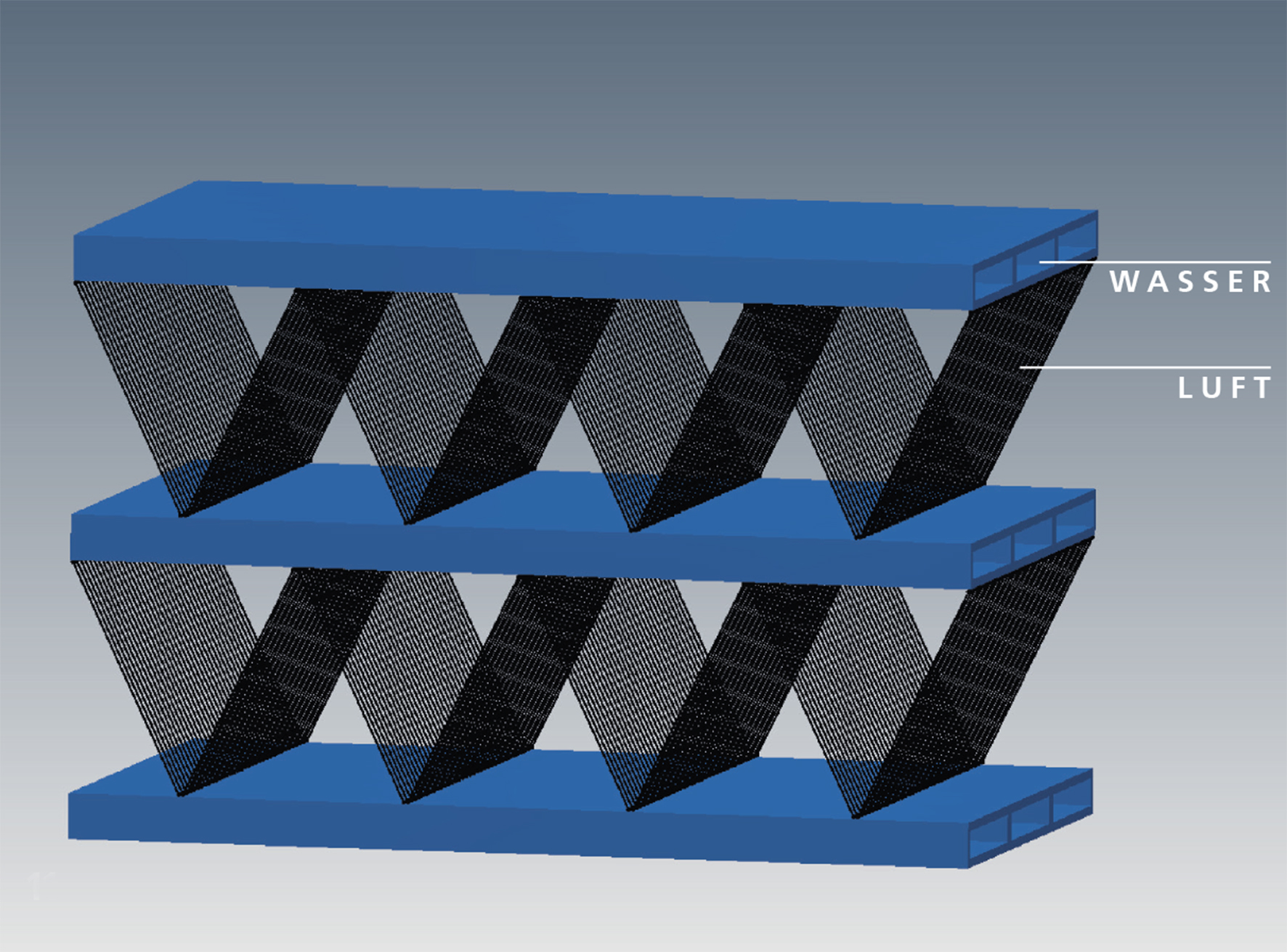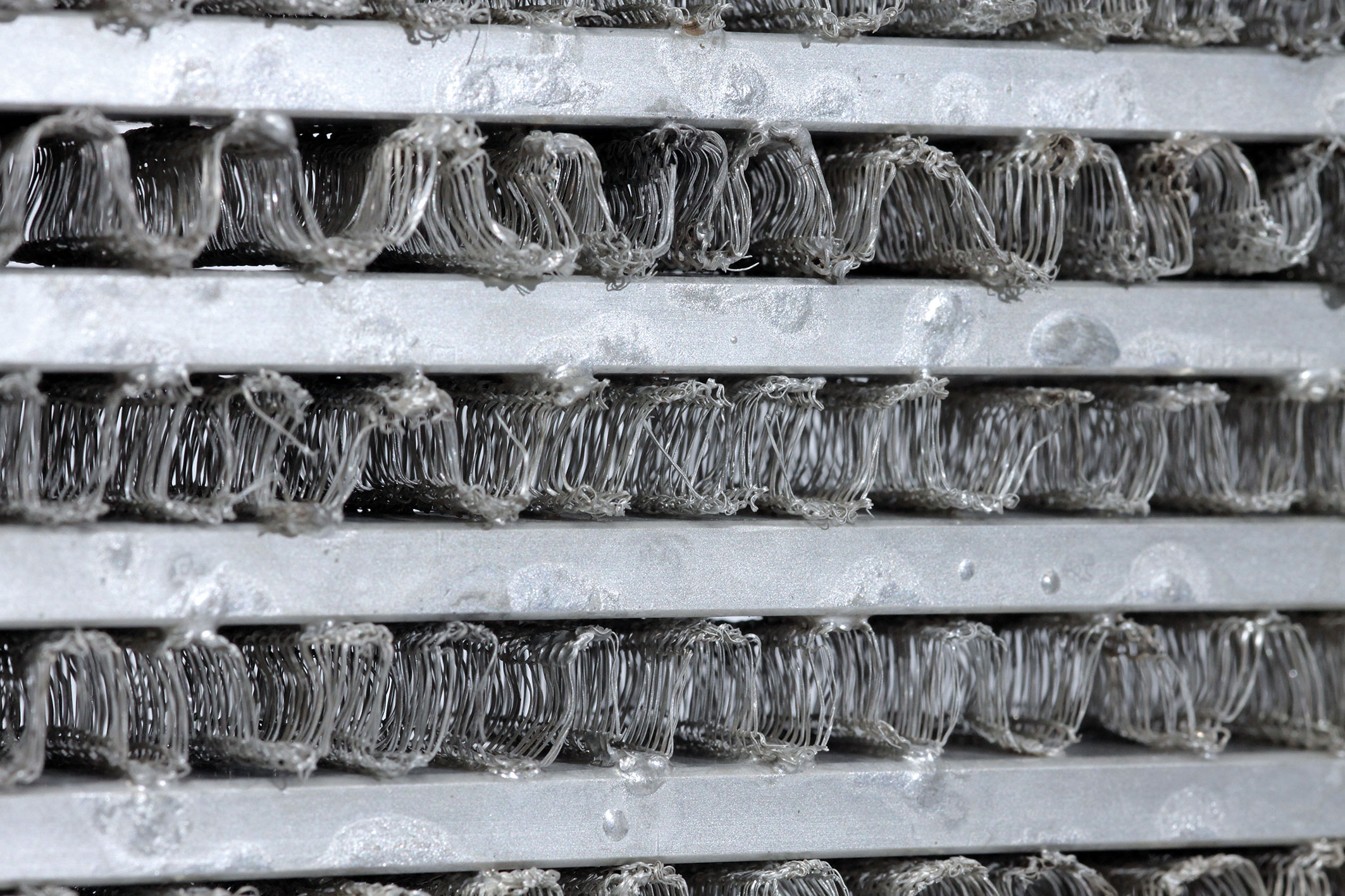| Duration: | September 2011 - August 2014 |
| Contracting Authority / Sponsors: | Project Management Agency (DLR) / German Federal Ministry of Education and Research (BMBF) |
| Project Partners: | Fa. Visiotex GmbH; HALTER & Sohn GmbH; Fraunhofer Institute for Manufacturing Technology and Advanced Materials IFAM, Dresden |
EffiMet – Efficient Heat Transfer with Metal Mesh Structures


Initial investigations of heat exchangers which use woven or knitted meshes of metal wire as the heat transfer structure have demonstrated a large potential for mass reduction and energy saving. In the ”EffiMet” joint project, which is supported within the ”KMUInnovativ Programme” of the German Federal Ministry of Education and Research (BMBF), Fraunhofer ISE is cooperating with Visiotex GmbH, Hattler & Sohn GmbH and Fraunhofer IFAM in Dresden to investigate the theoretical background, identify technical implementation routes and implement the results with selected typical components. The results from one of the constructed components show that about 50 % of the material needed to increase the surface area can be saved for the same energy efficiency values. Correspondingly, the energy efficiency can be raised while keeping the amount of material used constant.
The large potential for saving material is caused by the heat transfer medium flowing around many individual, thin wires. Compared to surfaces made of thin sheet metal (fins), wires can provide twice the surface area for the same amount of material. Thus, if the fin thickness is equal to the wire diameter, half of the mass can be saved. In addition, when the heat transfer medium flows around the wires, the heat transfer coefficient is comparatively high, so that significantly more heat can be transferred for the same surface area.
Different geometric designs for air-to-water heat exchangers in which wire mesh is soldered into circular or flat channels were evaluated at Fraunhofer ISE. Heat transfer and pressure loss were analyzed. Other geometric variations were considered using CFD simulations,employed to illustrate the air flow and heat transfer around the wire structures.